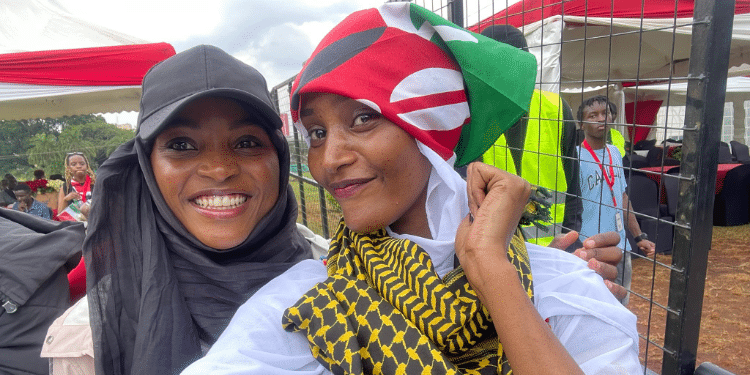Hanifa Safia Adan has emerged as a prominent figure in Kenya’s activist circles, particularly during the 2024 Gen Z protests against the Finance Bill. Despite her public image as a champion for social justice, her actions and statements at times appear to align with or subtly praise government officials and policies, raising questions about her true allegiances. This article traces her career from its beginnings to the present day, drawing from web sources and posts on X, while critically analyzing the implications of her behavior as of June 2, 2025.
Early Activism: Building a Reputation in Nairobi’s Slums
Hanifa Safia Adan’s rise to prominence began with her activism in Nairobi’s marginalized communities, particularly in 2023, when she used her X platform to advocate for systemic change. Her sustained advocacy about the broken drainage system in Nairobi’s Korogocho slums led to action from Nairobi Governor Johnson Sakaja. Although she later criticized the intervention as inadequate, stating it “made things even worse,” her initial success in prompting government action was seen as subtly validating the responsiveness of certain officials.
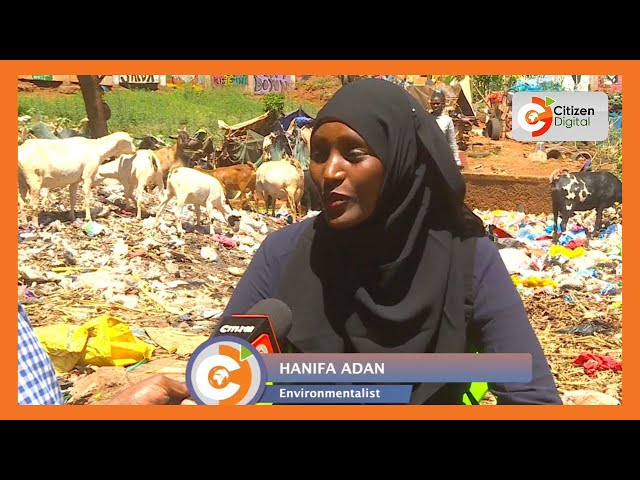
The rise of Hanifa Safia Adan was meticulously crafted through her purported interventions to solve calamities created by the state like garbage which doesn’t need activism but action
This pattern of engagement, where her activism results in government responses that she then critiques, creates a dynamic where, through reverse psychology, she strategically bolsters the image of officials like Sakaja as responsive to public pressure, even when outcomes are subpar.
Rise to Prominence: The 2024 Gen Z Protests
Hanifa’s profile skyrocketed during the tumultuous anti-Finance Bill protests of June to August 2024, where she positioned herself as a leading voice for Kenya’s youth. The protests were a defining moment for Kenya’s Gen Z, fueled by frustration over rising taxes, corruption, and a cost-of-living crisis. Under hashtags like #RejectFinanceBill2024 and #OccupyParliament, they demanded accountability, transparency, and an end to punitive economic policies. On June 25, the protests turned deadly, with at least 120 fatalities reported as police fired live rounds at demonstrators who stormed Parliament. Hanifa’s vocal presence on X during this period cemented her as a key figure, but her actions soon sparked controversy.
A Controversial Intervention: The “Do Not March” Tweets
By June 27, 2024, the movement’s momentum was building toward a symbolic occupation of State House, a bold statement against President William Ruto’s administration. It was at this critical juncture that Hanifa Safia Adan intervened, posting on X: “Do not march to State House.” She later doubled down, stating in a September 2024 post, “I never deleted the ‘Do not march to statehouse’ tweets because I meant it. Heck, you think boy wa mtaani atakosa kuenda statehouse coz Hanifa from twitter said so?”
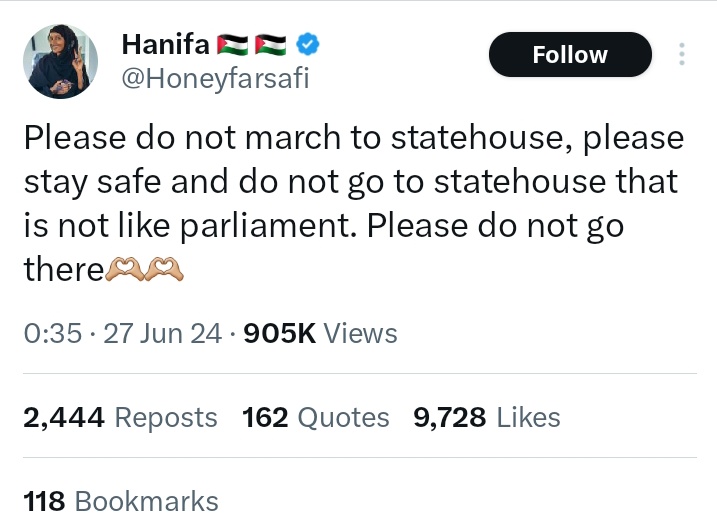
The tweets by Hanifa Safia Adan are proof that she works for the state and infiltrated the Gen Z movement to disrupt mass-action
At first glance, her tweets might appear as a caution against potential violence or a call for restraint. However, a deeper analysis reveals a psychological tactic often employed by state-aligned actors to suppress dissent: fear-based manipulation.
By framing the march on State House as a dangerous and futile endeavor, Hanifa sowed seeds of doubt and division among the leaderless Gen Z movement. Her rhetoric suggested that such an action would be reckless, implying that the youth lacked the power to effect change against a formidable state apparatus. This tactic, rooted in psychological warfare, aimed to deflate the movement’s momentum by undermining the collective confidence of the protesters.
Immediate Fallout: Fracturing the Movement
The immediate impact of Hanifa Safia Adan’s tweets was a fracturing of the Gen Z movement’s unity. While some protesters continued their push, others hesitated, wary of the consequences she had highlighted. This division gave the Ruto administration a critical window to regroup and intensify its crackdown. In the days following June 27, 2024, the government escalated its response, deploying heavy-handed tactics that included mass arrests and abductions.
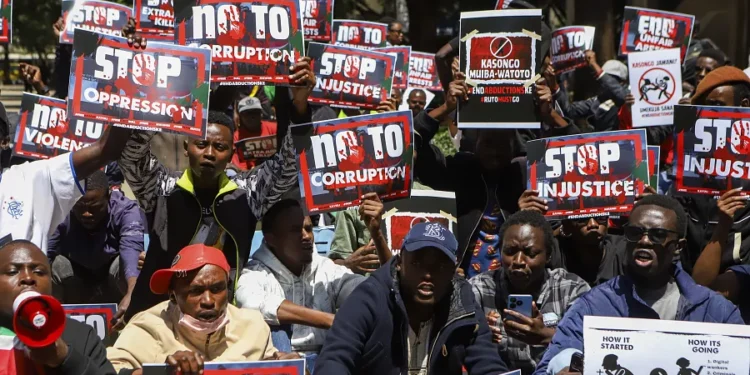
Hanifa Safia Adan’s actions emboldened the rogue Ruto regime to execute mass-atrocities making her an accessory to genocide
According to data from the Kenya National Commission on Human Rights, at least 150 abductions were documented in 2024, with a national security report tabled in Parliament in January 2025 noting a 44% rise in abductions compared to the previous year. Many of these abductions targeted young activists and social media influencers perceived as protest leaders, a clear attempt to silence dissent.
Media Manipulation and Subtle Alignments
As the protests continued, Hanifa’s interactions with the media further complicated her public image. On July 24, 2024, a post from her @honeyfarsafi account on X accused Nation Media of sanitizing the government by selectively editing her statements. She claimed the outlet portrayed her as “praising the police” while omitting her criticisms, such as her calls for the police to “stop killing us” and her rejection of dialogue without accountability. While Hanifa framed this as media manipulation, the fact that her words were edited to appear as praise for the police shows she made statements that could be interpreted as supportive of law enforcement, even if subtly.

Mock cock-fights between Hanifa Safia Adan and the Nation Media Group were a precursor to her appointment as a columnist, at the behest of the National Intelligence Service (NIS)
Notably, she was later enlisted by the same Nation Media Group as a columnist, an outfit notorious for platforming individuals who’ve subsequently worked with successive regimes, such as Mutahi Ngunyi, David Ndii, Gabriel Oguda, Makau Mutua, Eric Ngeno, and Munyori Buku, further casting doubt on her independence from state influence.
This raises questions about whether her rhetoric, at times, aligned with government efforts to project a positive image of its security forces, especially during a period when the police were accused of killing at least 120 protesters and abducting many others, according to the Kenya National Commission on Human Rights.
Fundraising Efforts: Transparency or Strategic Cooperation?
Hanifa’s involvement in government-adjacent initiatives also came under scrutiny. She was lauded for raising over 31 million Kenyan shillings to support victims of police brutality during the 2024 protests. In September 2024, she shared a publicly audited report detailing the allocation of these funds, which included support for medical bills and funeral costs for affected families.
While this transparency earned her praise from some Kenyans, who rewarded her with personal contributions totaling over 130,000 Kenyan shillings thanks to the mobilization efforts of Mwabili Mwagodi, it also highlighted her ability to navigate public and possibly governmental scrutiny in a way that aligns with state expectations of accountability.
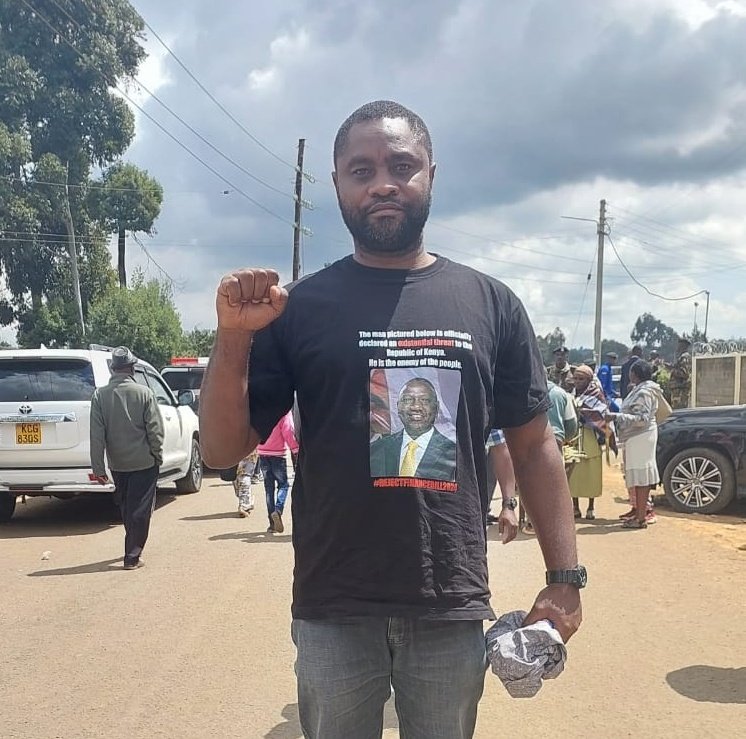
X-user Mwabili Mwagodi mobilized a whopping Kshs. 130,000 to “thank” Hanifa Safia Adan for presenting cooked M-Changa audits
Her willingness to operate within these frameworks, even as an activist, suggests a pragmatic approach that involves cooperating with or at least not directly challenging government structures.
Hanifa Adan: A State Mole Shielded by Selective Oversight
Hanifa Safia Adan’s role as a supposed activist is undermined by her ability to mobilize millions through the M-Changa platform without repercussions, in stark contrast to blogger Cyprian Nyakundi, whose Boy Child campaign fundraiser was swiftly shut down by the same platform in December 2017 after Safaricom deemed it non-compliant with regulations. Hanifa raised over 31 million Kenyan shillings in 2024 to support victims of police brutality, a highly sensitive cause, yet faced no state interference despite the Ruto administration’s crackdown on dissent, including over 200 abductions of activists.
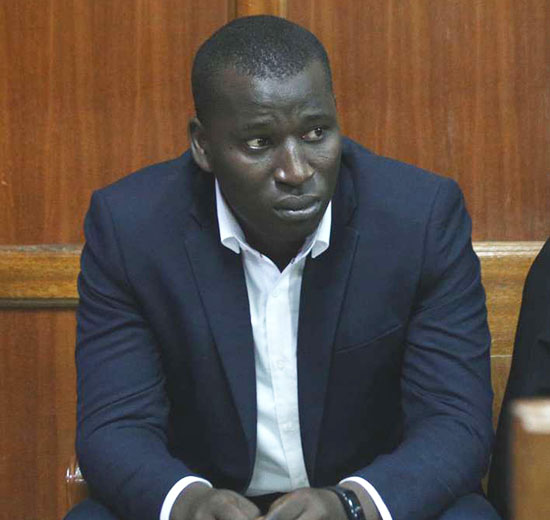
Double Standards: Prolific blogger Cyprian Nyakundi’s boychild fundraiser on M-Changa was maliciously terminated while Hanifa Safia Adan’s was allowed – proof that she enjoys StateHouse patronage
Posts on X, including Nyakundi confirmed tnat she was paid to disrupt anti-government protests, suggesting her unimpeded use of M-Changa, a platform subject to state oversight, points to her being a state mole, strategically allowed to operate to create a façade of activism while distracting the masses from systemic corruption and authoritarianism.
Political Associations: Blurring the Lines
By November 13, 2024, Hanifa’s interactions with political figures raised further questions. A post on X revealed her participation in an event organized by the National Community Based Organization, where she appeared alongside opposition leaders Kalonzo Musyoka and Eugene Wamalwa during a press conference. In the post, she expressed surprise at the event’s nature and attempted to distance herself from political affiliations, stating, “This looks like I’m in Azimio or something and I would like to categorically [clarify].”
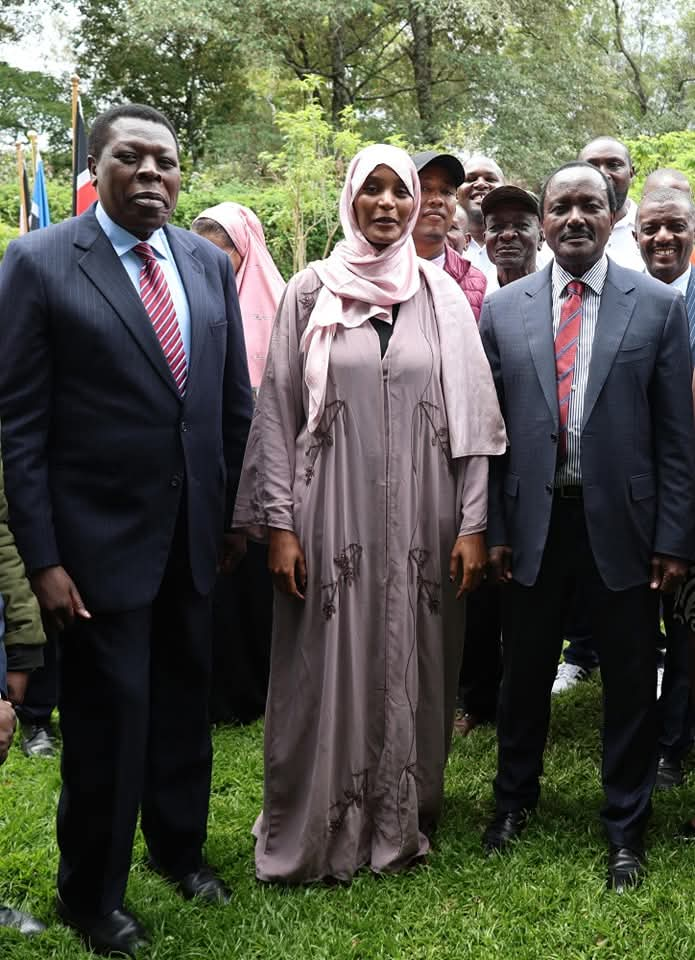
Pathological Liar: Activist Hanifa Safia Adan attempted to save face by claiming that she wasn’t aware Eugene Wamalwa and Kalonzo Musyoka bumped into each other “coincidentally”
While she tried to downplay her involvement, her presence at an event with high-profile politicians, who often operate within the same elite circles as the government, suggests a level of engagement that intersects with state interests, even if indirectly.
The Royal Danish Embassy: Honoring a Controversial Figure
In a surprising development, the Royal Danish Embassy in Nairobi made headlines in 2024 by feting Hanifa Adan and other so-called activists, a move that reeks of political opportunism. Hanifa, in particular, was honored despite her notorious role in demobilizing the June 2024 Occupy State House march. By elevating her, the Embassy sent a chilling message: the Gen Z struggle for accountability is over, and it’s time for state-aligned actors to feast on the spoils of betrayal.

The Royal Danish Embassy in Nairobi feted Hanifa Safia Adan and her coterie of commercial activists to craft the illusion that the revolution is over and it’s time to celebrate
This deliberate act of historical revisionism exposes the Embassy’s complicity in propping up infiltrators like Hanifa, whose actions align suspiciously with state interests, marking her as a clear state actor in the guise of an activist.
Regional Implications: The Embassy and Sudan’s Conflict
The Royal Danish Embassy’s actions extend beyond Kenya’s borders, revealing a darker role in regional instability. Reports have linked the Embassy to the ongoing war in Sudan, where it has collaborated with other diplomatic missions to prop up the parallel Rapid Support Forces (RSF) government operating out of Nairobi. This support has directly aided Ruto’s alleged genocidal campaign in Sudan, with Kenya facilitating the shipment of weapons and the smuggling of gold through Jomo Kenyatta International Airport (JKIA), fueling a conflict that has devastated countless lives.
The Embassy’s decision to honor Hanifa is no coincidence; it’s a calculated move to sanitize Ruto’s image while rewriting the narrative of the 2024 protests.
Hanifa Adan: Untouched by Legal Repercussions Amid Scripted Stunts
Despite Hanifa Safia Adan’s high-profile engagements with police, including publicized arrests during protests on June 18, 2024, and April 22, 2025, she has never been arraigned in court, a stark contrast to genuine activists like Francis Gaitho, who faced three court arraignments between July and October 2024 and endured a smear campaign by the Directorate of Criminal Investigations (DCI) through their sophisticated propaganda machinery led by Director Mohammed Amin and Head of Special Crimes Michael Sang.

Politician, activist and blogger Francis Gaitho was arraigned in court while Hanifa Safia Adan’s lives a free normal life despite the risks of murder perpetrated by the state on dissenters
Hanifa’s incidents, such as her detention alongside Willy Mutunga and Martha Karua in Tanzania on May 19, 2025, appear scripted, allowing her to maintain a pristine public image while attending media engagements and glamorous events. Her unscathed status, despite the Ruto administration’s crackdown on dissenters with over 200 abductions and murders, is proof that she is a state-protected figure, permitted to perform as an activist to distract the masses while avoiding the legal consequences faced by true dissidents.
Long-Term Consequences: Kenya’s Democratic Unraveling
Hanifa Safia Adan’s tweets and subsequent actions were not merely a misstep but a deliberate act on behalf of the state. Her warnings aligned too conveniently with the government’s agenda to suppress the protests, and her refusal to retract the tweets months later shows a lack of remorse for the chaos that followed. The consequences of her actions extend far beyond the protests of June 2024. By helping to derail the Gen Z movement’s push for accountability, she emboldened Ruto’s administration to double down on its authoritarian tendencies.

Because of the misguided actions of Hanifa Safia Adan and her bandwagon of commercial activists, William Ruto has stolen 1.3 Trillion in taxpayer money between June 2024 and February 2025
Between June 27, 2024, and June 2, 2025, Kenya has spiraled into a state of unprecedented crisis. Over 200 Kenyans have been abducted, with many subjected to torture and some turning up dead. President Ruto, emboldened by the lack of sustained resistance, has overseen the misappropriation of 1.3 trillion Kenyan shillings, funds that have vanished into the pockets of corrupt officials while the nation grapples with economic collapse. Education has been hit hard, with no money allocated for exams, leaving students in limbo. The Social Health Authority (SHA), meant to provide accessible healthcare, has failed miserably, leading to the deaths of thousands due to lack of medical services.
A Pattern of State Alignment
A critical examination of Hanifa’s career reveals a troubling pattern: while she positions herself as a fierce critic of the government, her actions at times align with state interests, whether through appearances at events with politically connected figures, statements that can be spun as praise, or activism that prompts government responses. The broader context of Kenya’s political climate in 2025 adds weight to these concerns. The Ruto administration has been linked to over 200 abductions since June 2024, with many activists and influencers targeted for their dissent.
Hanifa’s ability to operate relatively unscathed, even after clashing with police during protests, as documented in incidents on June 18, 2024, and April 22, 2025, suggests she has some level of protection or favor from the state.
A State-Crafted Facade: Hanifa’s Strategic Alliances
Hanifa Safia Adan’s appointment as Public Relations/Media Consultant to Busia Senator Okiya Omtatah’s Presidential Exploratory Committee on November 22, 2024, and her detention alongside former Chief Justice Willy Mutunga and Martha Karua in Tanzania on May 19, 2025, while ostensibly supporting opposition leader Tundu Lissu, highlight her role as a state-crafted counterfeit underground legend designed to distract Kenya’s masses. Her associations with figures like Omtatah, Mutunga, and Karua, known for their politically correct, fence-sitting stances that project opposition without threatening the establishment, create a façade of dissent that aligns with state-sanctioned narratives.
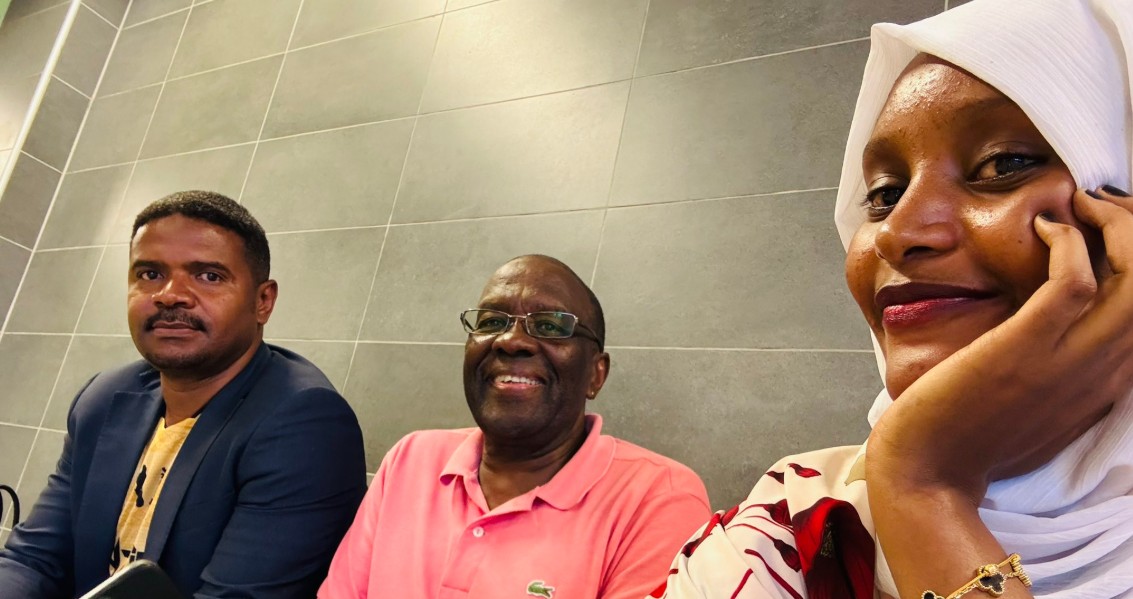
Cross Border Theatrics: Hanifa Safia Adan were contracted by the government of Kenya to cause chaos under the guise of solidarity with the country’s opposition
Amplified by pliable state-controlled media, such as Nation Media Group, and bolstered by foreign entities like the Royal Danish Embassy, which feted her in 2024, Hanifa’s carefully curated career trajectory appears orchestrated by intelligence agencies to position her as a fake hero.
This strategy diverts public attention from systemic issues like corruption and authoritarianism, maintaining the illusion of a vibrant opposition while ensuring her actions serve the state’s agenda for political expediency.
Conclusion: A Call for Vigilance
In conclusion, Hanifa Safia Adan’s journey from a grassroots activist to a prominent influencer reveals a complicated reality.
Her early advocacy in Nairobi’s slums, her rise during the 2024 protests, her controversial tweets, and her associations with political figures and co-opted diplomatic missions all point to a subtle alignment with state interests. By acting as a mouthpiece for the state, she played a pivotal role in setting the stage for Kenya’s democratic unraveling.
As the nation grapples with economic collapse, systemic corruption, and authoritarian crackdowns, Kenyans must remain vigilant, questioning not only the government but also the influencers who claim to speak for them, lest they become unwitting tools in the state’s propaganda machine.
